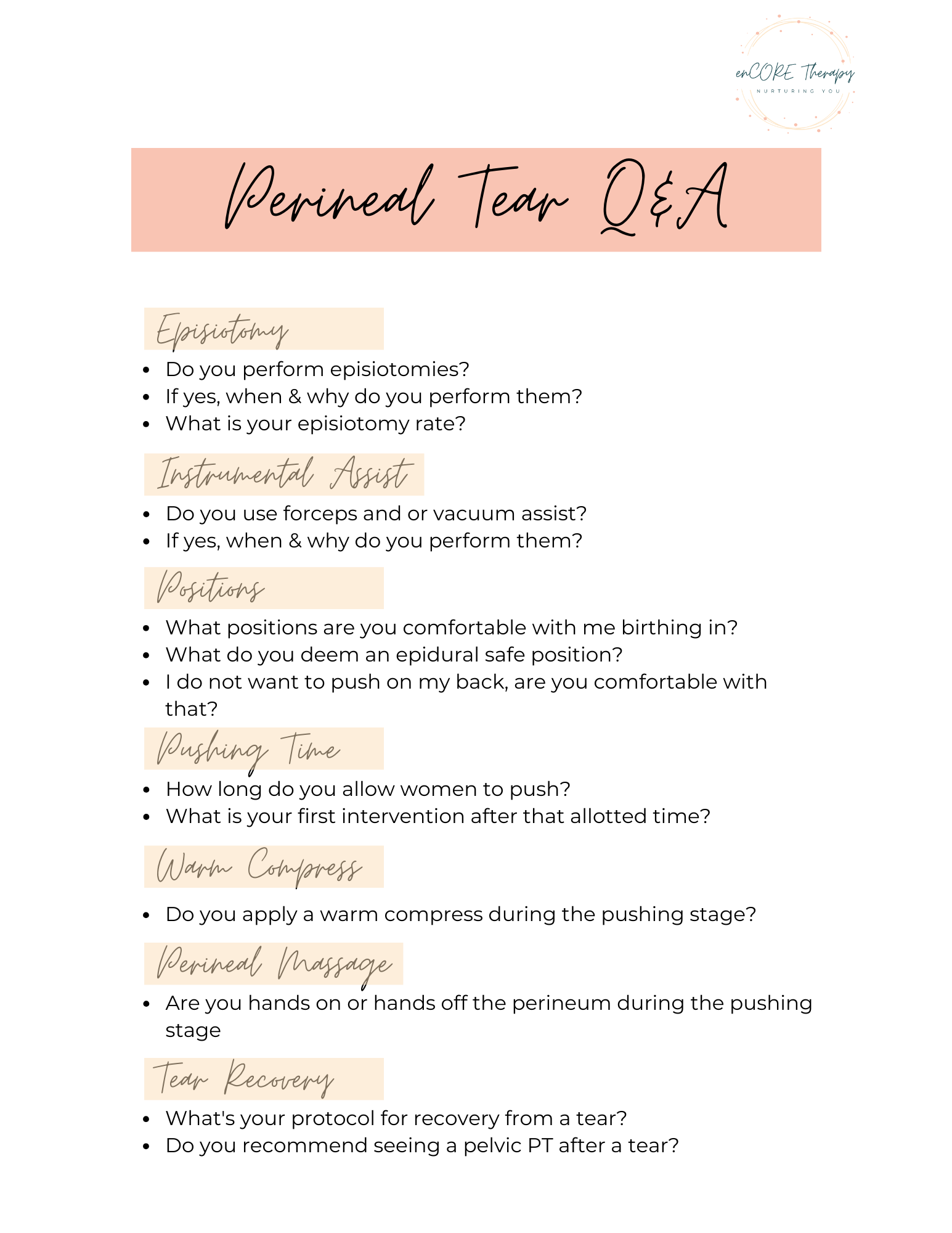Navigating Perineal Tearing: What Moms Need to Know
Bringing a new life into the world is a miraculous journey, but it's not without its challenges. One concern that often comes up for expecting moms is the risk of perineal tearing during childbirth. In this blog post, we'll explore the top risk factors associated with perineal tearing, including episiotomy, instrumental assist births, birthing positions, pushing time, and perineal massage. It's crucial to have open and honest conversations with your birth provider before the big day to ensure everyone is on the same page.
Episiotomy: A Double-Edged Sword
Episiotomy, a surgical cut made to widen the vaginal opening during delivery, was once a routine procedure. However, current medical practices lean towards avoiding episiotomies unless medically necessary. Discussing your preferences and understanding your provider's approach is essential to make informed decisions about your birthing experience.
Instrumental Assist Births: Tools of Assistance
Forceps and vacuum extraction are sometimes used to assist in delivery. While these tools can be beneficial in certain situations, they may increase the risk of perineal tearing. It's crucial to discuss the potential need for instrumental assistance with your birth team beforehand, ensuring you're well-informed about the potential risks and benefits.
Birthing Positions: Finding What Works for You
The position you choose during labor can impact perineal tearing. Squatting, hands-and-knees, and side-lying positions may reduce the risk compared to the lithotomy position (lying on your back with legs in stirrups). Discussing birthing position options with your provider allows you to make choices aligned with your comfort and birthing preferences.
Pushing Time: Balancing Act
The duration of the pushing phase during labor is a factor in perineal tearing. While a slow and controlled approach may reduce tearing, prolonged pushing increases the likelihood. Engaging in open communication with your provider about the progress of labor and the appropriate timing for pushing can help strike a balance that minimizes the risk.
Perineal Massage: A Proactive Approach
Perineal massage, involving the gentle stretching of the perineum, has been shown to reduce the risk of tearing during childbirth. Learning and practicing perineal massage during pregnancy can be empowering. Discuss this technique with your provider to ensure you're doing it correctly and to address any concerns.
The Importance of Communication with Your Birth Provider:
Before the big day arrives, have a candid conversation with your birth provider about your preferences, concerns, and the topics mentioned above. Understanding their approach to episiotomy, instrumental assistance, birthing positions, pushing time, and perineal massage will help create a collaborative birthing plan tailored to your needs. Don’t be afraid to ask the hard questions of why and when they are going to use an episiotomy or forceps/vacuum.
In the journey of childbirth, knowledge is your greatest ally. By understanding the risk factors associated with perineal tearing and openly communicating with your birth provider, you can actively participate in shaping a birthing experience that aligns with your values and preferences. Remember, every birth is unique, and having a supportive team around you can make all the difference. Here's to a healthy and empowered birthing experience!
Click the link below to get this handout of questions to ask your provider about perineal tears!
